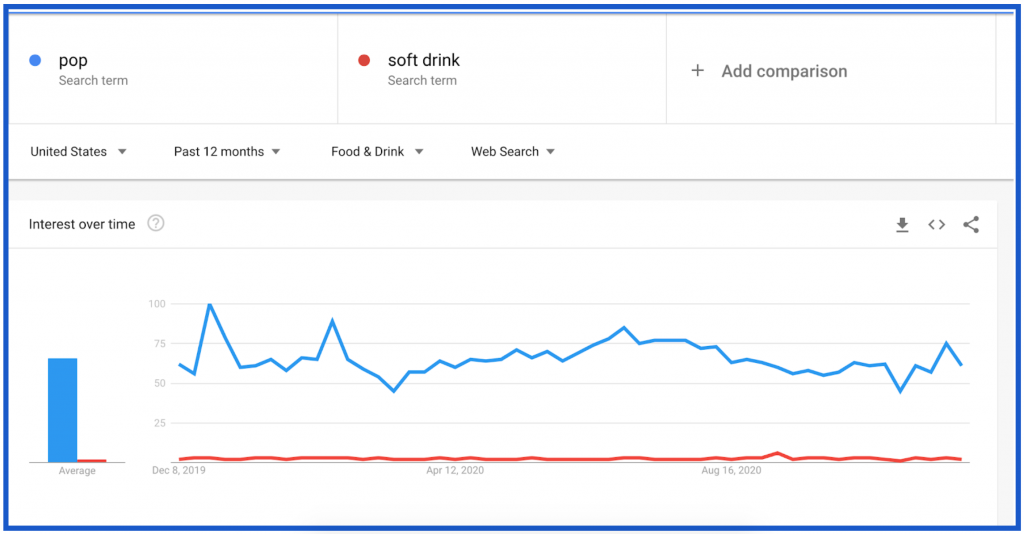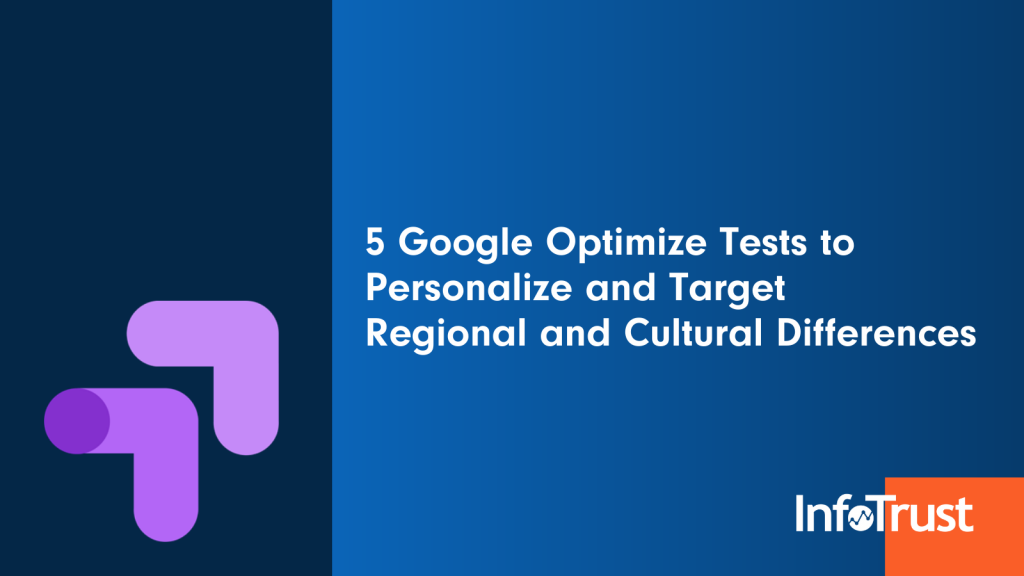If you’re a global organization, you understand the need to personalize your search strategy and keywords to account for regional differences. You probably do this even for your in-store campaigns, TV adverts, and OOH billboards. We even tell Google about our regional site variants, so it knows how to index our sites based on these nuances.
But how does a site owner or marketer know if the localized experience, content, and vocab truly matches the regional culture?
To tackle this problem, we’ve outlined 5 Google Optimize tests to take your A/B testing and personalization for regional context to the next level.
1. Think dialects in addition to languages.
One size does not fit all! People often speak different dialects in different locations. Showing that you’re tuned into linguistic styles demonstrates an extra level of personalization and could capture a good customer base.
As an example, while Arabic is spoken all over the Middle East, the dialect varies across countries. “How are you?” in Modern Standard Arabic translates as ‘Kayf Hallak?”, while in Egyptian Arabic, it would be “Izzayak?”. Next time you’re translating a website from a global template, have a translator replace standard terms with those in the local dialect and test for changes to engagement or conversion on site.
2. Change images and influencers affinity by market.
People respond to different images based on their location. Test changes to the images on your homepage or promo banners, and then target the experience precisely to those geographic locations.
Google Optimize has a great targeting feature called Audience targeting that lets you select visitors who will see your experience based on their current Country, Region, Metro, or City.

An example of how we have done this for clients is by switching out the standard images with local/regional influencers, local sports teams, and even local store images.
3. Be aware that vocabulary differences exist!
Some terms are simply more well-known in one region vs others, possibly as a result of cultural prominence and media.
Here at InfoTrust, we ran a simple experience to test this.
Background: From our general conversations with clients, we understood that the term CPG (Consumer Packaged Goods), while often used interchangeably with FMCG (Fast Moving Consumer Goods), is not commonly known all over the world. In the West, CPG is more prominent, while in Eastern markets, FMCG is used more often.
Hypothesis: Replacing the term ‘FMCG’ with ‘FMCG & CPG’ on specific pages will increase the overall views and engagement on those pages
Testing objectives: Increase in Pageviews and Contact Us clicks
Variants: We simply added ‘FMCG’ to the title of the article and anywhere the term CPG was used
Original vs Variant

Results: For both the key objectives of the test, the variant performed better. An added bonus was that users who viewed the variants were more likely to register for webinars during that session.
PageViews: 25% to 75% improvement for the variant over the tested period

Contact Us Clicks : -23% to +53,000% improvement for the variant over the tested period

Successful Webinar Registrations : -64% to +33,000% improvement for the variant over the tested period

And this is not the end of our A/B testing. Next, we’re going to target users by region with vocabulary that’s used in that region. Watch this space for updates!
When you think about applying the same to your business, think about local variations of terms for the same item. Here are some examples to get you started: Corn vs Maize, Crisps vs Chips, Pop vs Soda, Car boot vs Car trunk, Tennis shoes vs Sneakers.
Can you think of more?
4. Know that trends and keyword performances differ across countries
Search trends vary drastically by region. While your SEM team may be on top of things by using great tools such as Google Search Console and Google Ads Keyword Planner to inform their decisions along with other 3rd-party tools, don’t underestimate the importance of simply knowing the behavior of your customer base.
While your search campaigns may be keyword optimized, make sure your on-site content reflects those regional word variations as well. Simply translating a global template and missing those keywords on your website negates all the hard work done by the Search team.
But, before you change the keywords in content drastically, make sure to test. We suggest following an organized approach when doing this, given the volume of keywords that can be tested:
Step 1: Vocabulary and keyword research
Analyze organic Search terms in Search Console for your site. Perform competitor site search term analysis and also keep watch on trending words and differences by country and region using Google trends.
Below you’ll see how much more common the usage of the word ‘pop’ in reference to a fizzy drink is in the US vs India.


Step 2: Generate a hypothesis
Step 3: Ideation
Step 4: Group similar ideas together to prioritize tests
Step 5: Test using Google Optimize
Step 6: Maintain a test log of results and analyze the results
Step 7: Refine your tests and repeat!
5. Consider purchase behavior and predictable irrationality
Always remember that your customers are complex beings. Whenever I think about consumer behavior, I only remember one thing and that is that they are predictably irrational! Each time you begin the process of testing, take everything you thought you knew about a person, customer, segment, and throw it all away! Preconceived biases are one of the major reasons that big names came up with unexpectedly big product flops!
But that doesn’t mean we stop trying. Instead, consider this irrationality even when defining/refining the flow, content, and user experience of your website. Work with your consumer insight team and utilize the treasure-trove of your Google Analytics data to understand your consumers as well as their on-site behavior as best as you can (and do this as close in time as possible to the site/campaign/promo launch – remember your goal is to predict their irrationality!).
User-testing, heatmaps, and surveys can tell you a lot about your new site. In addition to these, A/B testing for regional variants is another great (and free!) way to optimize for irrational behaviors on-site specific to certain regions.
Here are some thoughts to get you started:
- Price-Elasticity: Some markets are overall more price-conscious. Others aren’t.
- As an example, couponing is more prominent in the Western world, while Eastern markets prefer price slashes on the product. Still, others might want warranty or price guarantees.
- Sources of Information: Some markets value testimonials and reviews. Others want extensive product details on the product page.
- Information-Gathering Style: Some regions prefer comparing online while others will want to test in-store before purchase.
Economic and social situations: Particularly at this time, consider COVID constraints and limitations on users by market.
And here are some places where you can find information on these regional differences:
- Google Analytics Behavior and Shopping Reports: Great for an overall understanding of your own website visitors – content viewed, their engagement, products explored and purchased (if you have eCommerce on your site)
- Think with Google Shopping Insights: Predominantly for the US market. By analyzing keyword data from all relevant searches by consumers throughout their shopping journey, Shopping Insights helps you understand which products and brands are popular among your customers.
- Other 3rd party tools such as BrandPuls, TGI WebIndex, Facebook & Snap audience insights, eMarketer, Effective Measure.
After you’ve narrowed down a few behavioral elements to test, consider modifying those elements to your website, and test using Google Optimize.
Here’s an example: If one region prefers testing-in store, online promo codes might not be as effective. Instead, consider adding a code they can download and provide in-store to purchase. Those downloads would be your primary objective for that test.
This is just the beginning folks! As you can see, there’s a lot to help you understand your markets. I hope I have inspired you to think regionally even if your website was designed globally and to use Optimize to make your markets more profitable worldwide!


